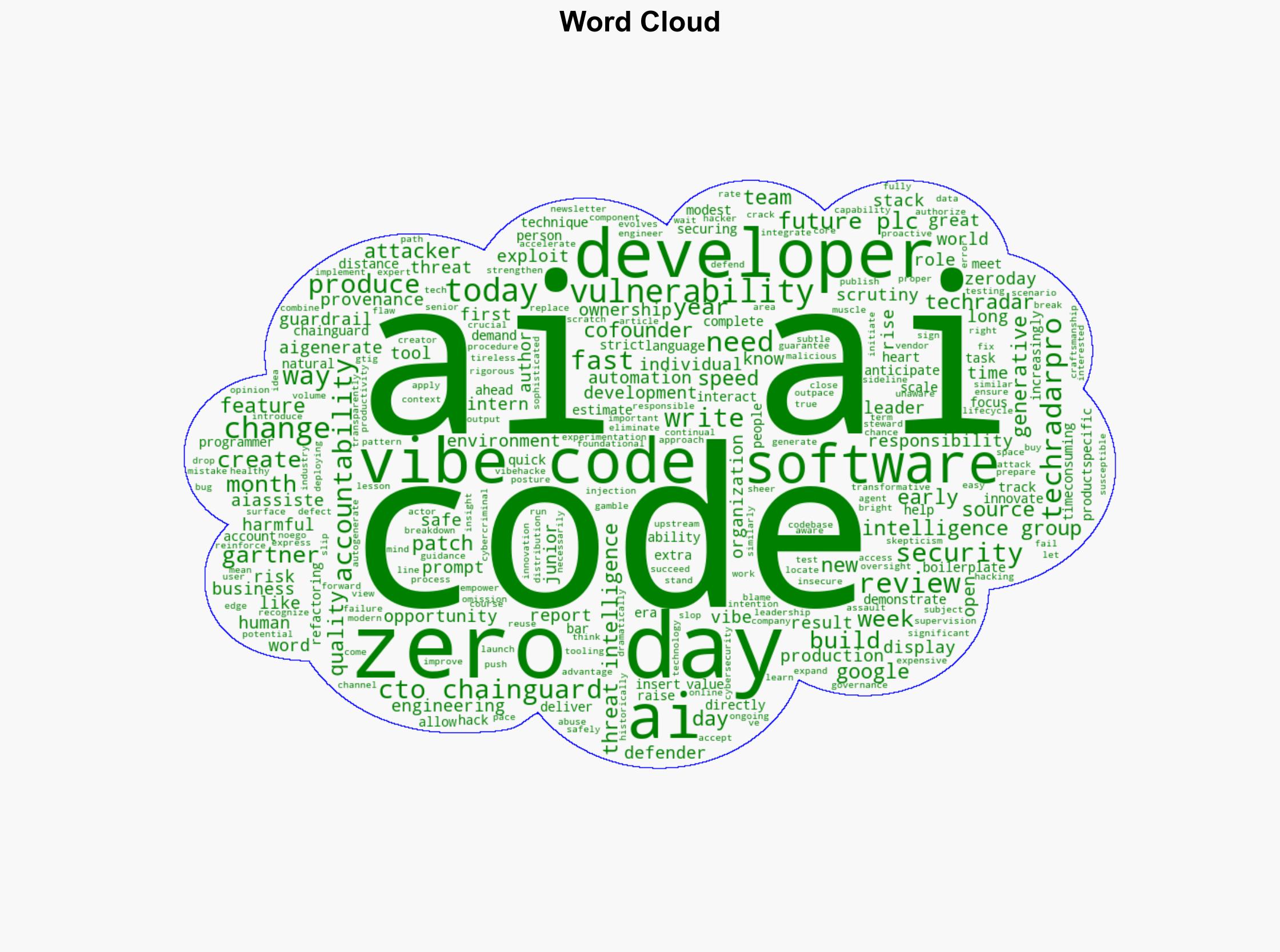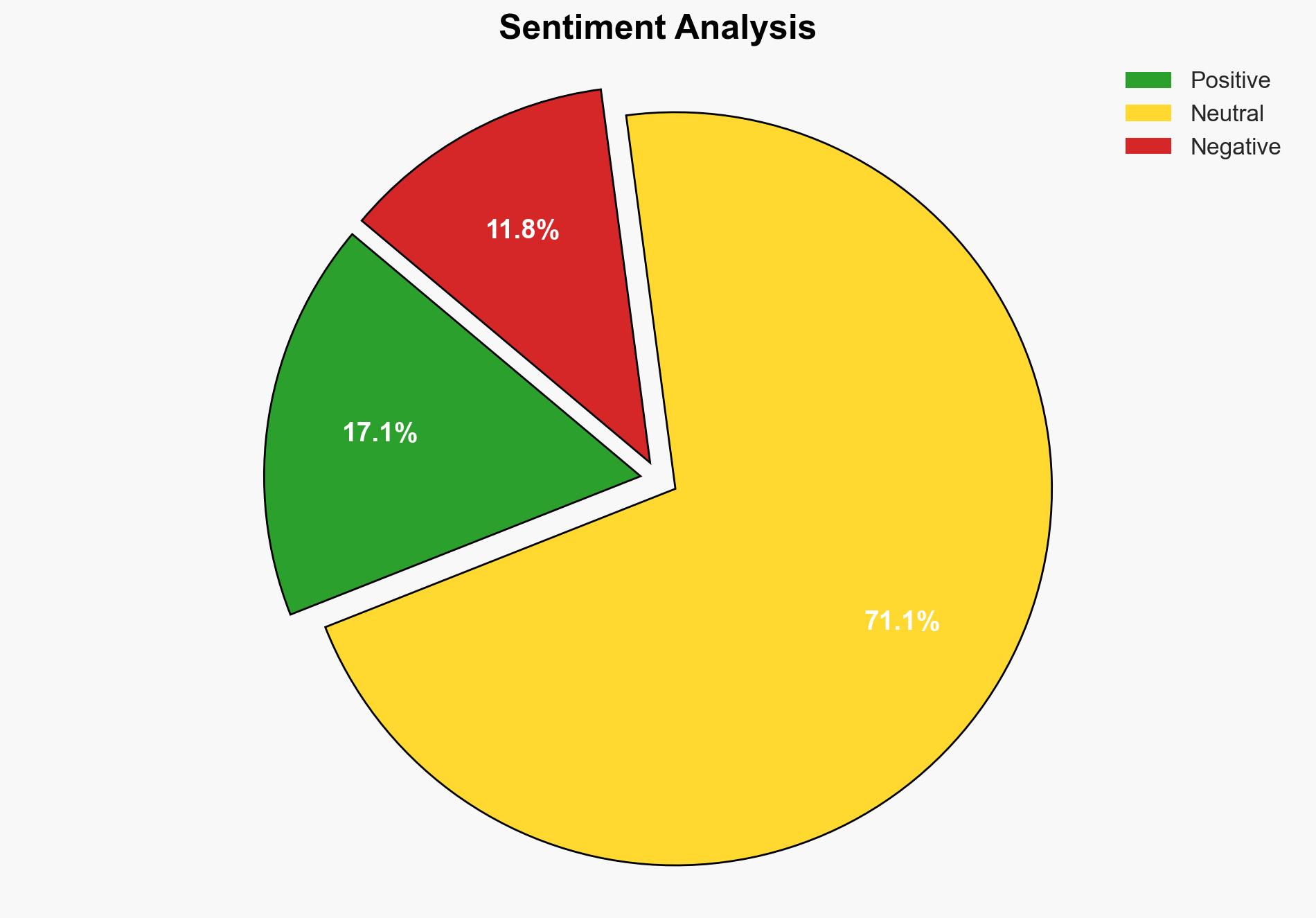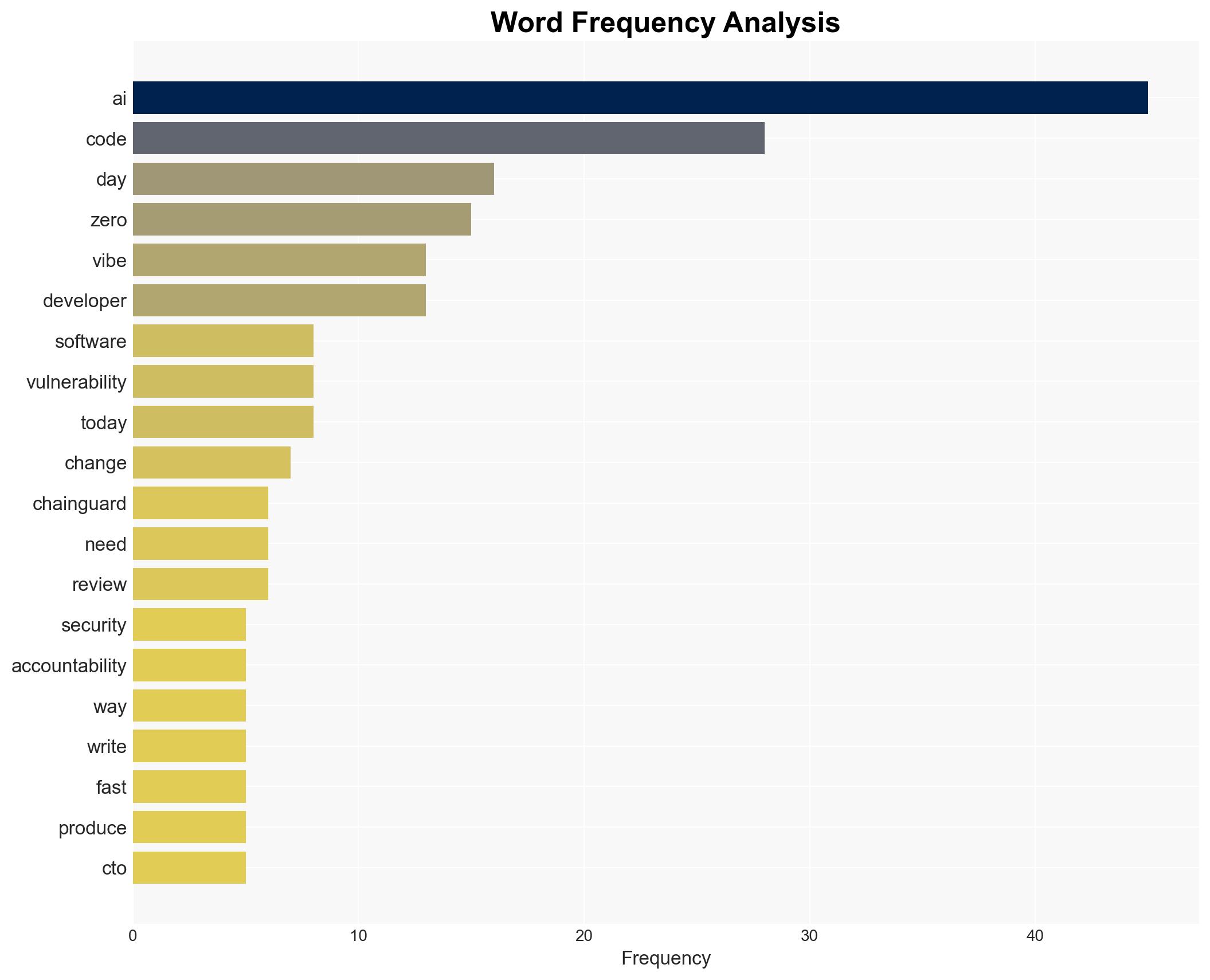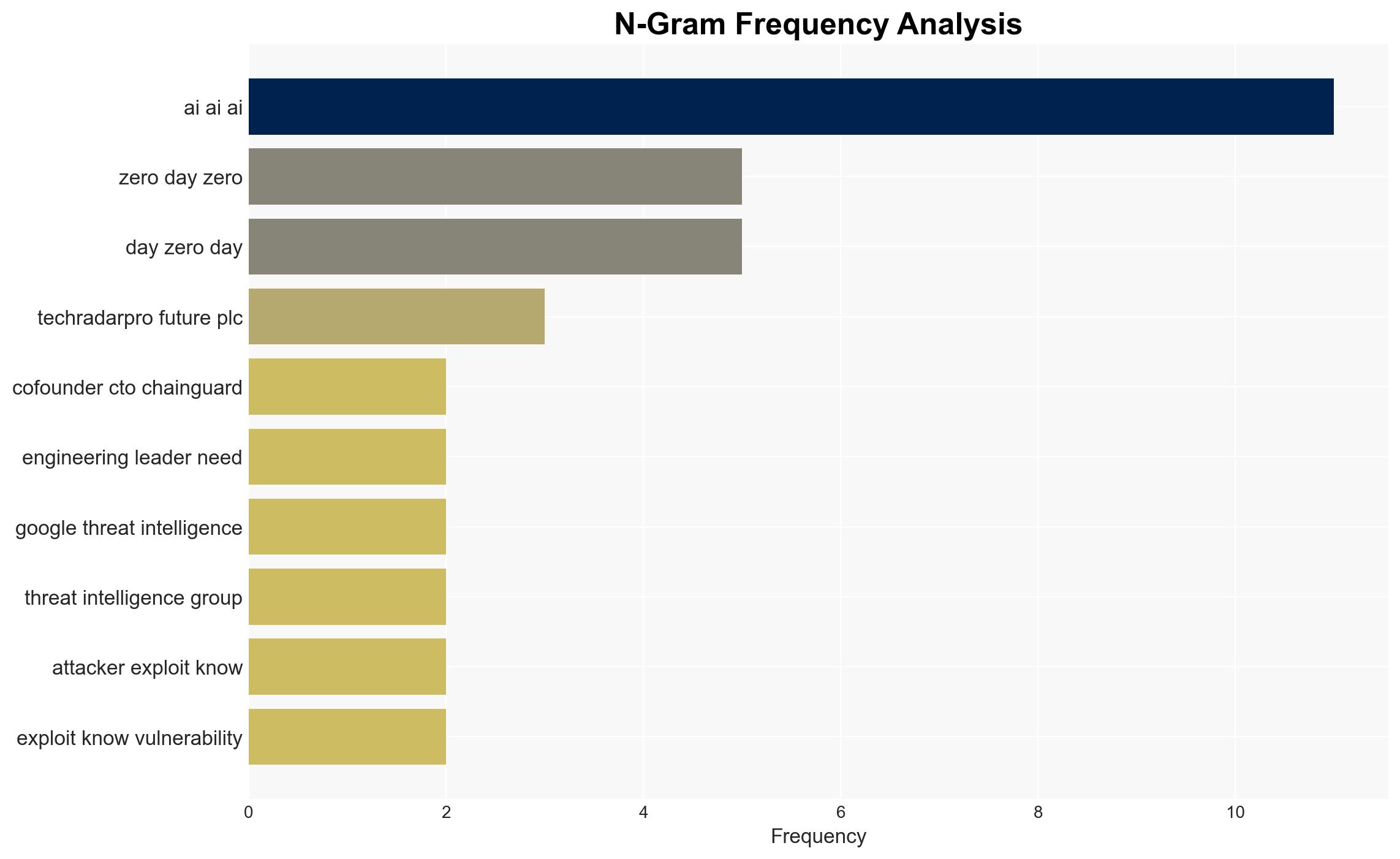Vibe coding to vibe hacking securing software in the AI era – TechRadar
Published on: 2025-11-18
AI-powered OSINT brief from verified open sources. Automated NLP signal extraction with human verification. See our Methodology and Why WorldWideWatchers.
Intelligence Report: Vibe Coding and Vibe Hacking in the AI Era
1. BLUF (Bottom Line Up Front)
With a moderate confidence level, the most supported hypothesis is that the rapid adoption of AI-assisted coding, termed “vibe coding,” will significantly increase the risk of vulnerabilities in software development, necessitating enhanced security protocols and oversight. Recommended actions include implementing rigorous code review processes and developing AI-specific security training for developers.
2. Competing Hypotheses
Hypothesis 1: Vibe coding will improve software development efficiency but will lead to increased security vulnerabilities due to the rapid pace and lack of direct human oversight.
Hypothesis 2: Vibe coding will enhance software quality by enabling developers to focus on higher-level tasks, with AI-generated code being sufficiently robust when combined with existing security measures.
Hypothesis 1 is more likely due to the inherent risks associated with AI-generated code, such as the potential for malicious code insertion and the historical precedence of security lapses when new technologies are rapidly adopted without adequate controls.
3. Key Assumptions and Red Flags
Assumptions: It is assumed that AI-generated code will not inherently possess the same level of security scrutiny as human-written code. Additionally, it is assumed that developers may rely too heavily on AI, reducing their vigilance.
Red Flags: The rapid pace of AI adoption without corresponding security training or oversight mechanisms. The potential for AI tools to be exploited by malicious actors to insert vulnerabilities.
4. Implications and Strategic Risks
The primary risk is the increased surface area for cyber attacks due to the volume and speed of AI-generated code. This could lead to a rise in zero-day vulnerabilities and exploitation by cybercriminals using similar AI tools. Politically, this may result in regulatory scrutiny and potential liability for software vendors. Economically, increased security breaches could lead to significant financial losses and damage to brand reputation.
5. Recommendations and Outlook
- Implement comprehensive AI-specific security training for developers to ensure awareness of potential vulnerabilities.
- Develop robust AI code review protocols to detect and mitigate risks before code deployment.
- Establish a cross-functional task force to monitor AI code integration and respond to emerging threats.
- Best-case scenario: AI coding enhances productivity without compromising security, leading to innovation and competitive advantage.
- Worst-case scenario: A significant security breach occurs due to AI-generated code, resulting in regulatory penalties and loss of consumer trust.
- Most-likely scenario: Incremental improvements in productivity are offset by increased security challenges, necessitating ongoing adjustments to security practices.
6. Key Individuals and Entities
Dan Lorenc, co-founder and CTO of Chainguard, is a key figure advocating for the opportunities and challenges presented by vibe coding.
7. Thematic Tags
Cybersecurity, AI, Software Development, Risk Management
Structured Analytic Techniques Applied
- Adversarial Threat Simulation: Model and simulate actions of cyber adversaries to anticipate vulnerabilities and improve resilience.
- Indicators Development: Detect and monitor behavioral or technical anomalies across systems for early threat detection.
- Bayesian Scenario Modeling: Forecast futures under uncertainty via probabilistic logic.
Explore more:
Cybersecurity Briefs ·
Daily Summary ·
Support us





